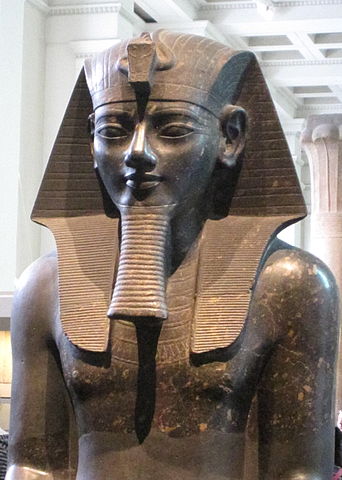Amenhotep III: The Architectural Marvels of Ancient Egypt
1. Ascension to the Throne:
- Context: Amenhotep III, also known as Amenhotep the Magnificent, ascended to the throne of Egypt around 1386 BCE. His reign marked a period of prosperity and grandeur.

2. Temple of Luxor:
- Architectural Splendor: Amenhotep III initiated the construction of the Temple of Luxor. The temple, dedicated to the divine triad of Amun-Ra, Mut, and Khonsu, showcased impressive columns, statues, and obelisks.
3. Colossi of Memnon:
- Giant Statues: The Colossi of Memnon, two massive statues of Amenhotep III seated on thrones, were erected at the entrance of his mortuary temple on the west bank of the Nile. These statues are among the most iconic monuments of ancient Egypt.
4. Mortuary Temple at Kom el-Hettan:
- Grand Complex: Amenhotep III commissioned the construction of a vast mortuary temple at Kom el-Hettan on the west bank of the Nile. The temple featured colossal statues, courts, and ceremonial structures.
5. The Palace Complex at Malkata:
- Royal Residence: Amenhotep III built a sprawling palace complex at Malkata, near Thebes. The palace included an audience hall, residential quarters, and extensive gardens, showcasing the king’s opulent lifestyle.
6. The Sphinx Avenue:
- Processional Way: Amenhotep III initiated the construction of the Sphinx Avenue, a grand processional route connecting the Temple of Luxor to the Temple of Karnak. The avenue was lined with sphinx statues, creating a monumental approach to the temples.
7. Temple of Millions of Years (Mortuary Temple):
- Architectural Innovation: Amenhotep III’s mortuary temple, also known as the Temple of Millions of Years, was dedicated to the king’s posthumous worship. It featured innovative architectural elements, including massive statues and unique decorative motifs.
8. Statues of Memnon at the Temple of Amenhotep III:
- Giant Statues: Within the precincts of the Temple of Amenhotep III, colossal statues of the king depicted him in a standing position. These statues emphasized the king’s divine and royal attributes.
9. Luxurious Statuary:
- Sculptural Artistry: Amenhotep III’s reign witnessed the creation of numerous statues and sculptures, displaying the artistic prowess of the time. The king was often depicted with idealized features, emphasizing his divine status.
Amenhotep III’s reign is celebrated for its architectural splendor and cultural achievements. The monuments and structures associated with his rule stand as enduring symbols of ancient Egyptian grandeur, reflecting the wealth, power, and cultural richness of the time.









